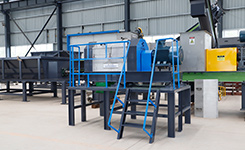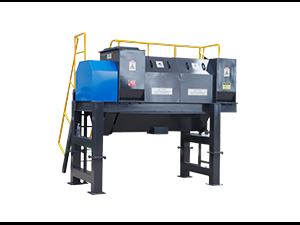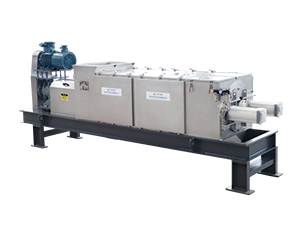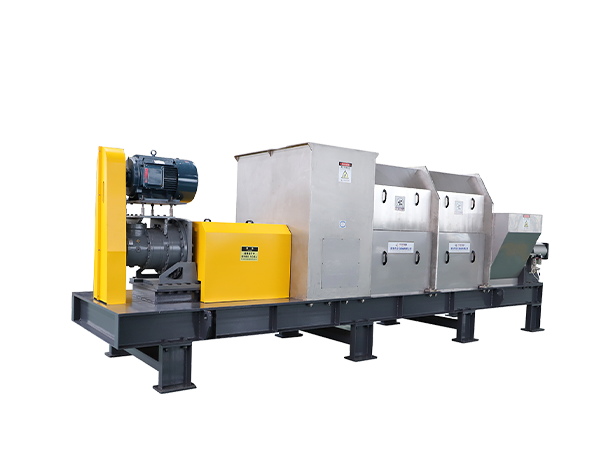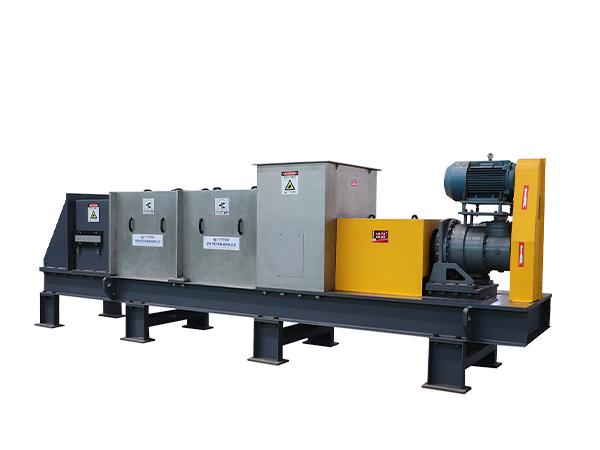The Essential Role of Screw Press in Efficient Dehydration
The Essential Role of Screw Press in Efficient Dehydration
The screw press is a type of equipment that uses physical extrusion for dehydration and plays an important role in many fields. It is mainly composed of a drive system, a feeding box, a screw conveyor, a screen mesh, a material blocking device, a water collection tank, and a frame. After the material enters from the feeding box, it is transported by the screw conveyor and subjected to progressive pressure, expelling excess water through the screen mesh from the liquid outlet. The dehydrated material is then discharged from the equipment by pushing open the material blocking device at the outlet of the screw conveyor.
Working principle
Its working principle is divided into two stages.
In the first stage, dehydration is achieved using the screw conveyor. The transmission section ensures smooth material entry, and the pitch and inner diameter of the screw blades gradually decrease in the dehydration section, reducing the transmission space and increasing the pressure on the material to squeeze out the water.
In the second stage, dehydration is accomplished with the help of the material blocking device. When the material enters the discharge section of the screw conveyor, the axial thrust of the screw conveyor pushes out the material, and the pressurized material blocking device exerts a reverse force, creating a squeezing force for the second stage of dehydration.
Characteristics
The screw press has many characteristics. Its operating cost is low, as it adopts the physical extrusion dehydration principle and does not require additional heat sources, consuming less energy compared to drying equipment. It can handle large volumes continuously, as the parameters of the screw conveyor are calculated and analyzed mechanically to solve problems such as slippage, increasing the processing capacity per unit time. It produces materials with low moisture content, using precise analysis and corresponding technical parameters for different materials to reduce the water content of the extruded material.

The screw press is a type of equipment that uses physical extrusion for dehydration and plays an important role in many fields. It is mainly composed of a drive system, a feeding box, a screw conveyor, a screen mesh, a material blocking device, a water collection tank, and a frame. After the material enters from the feeding box, it is transported by the screw conveyor and subjected to progressive pressure, expelling excess water through the screen mesh from the liquid outlet. The dehydrated material is then discharged from the equipment by pushing open the material blocking device at the outlet of the screw conveyor.
Working principle
Its working principle is divided into two stages.
In the first stage, dehydration is achieved using the screw conveyor. The transmission section ensures smooth material entry, and the pitch and inner diameter of the screw blades gradually decrease in the dehydration section, reducing the transmission space and increasing the pressure on the material to squeeze out the water.
In the second stage, dehydration is accomplished with the help of the material blocking device. When the material enters the discharge section of the screw conveyor, the axial thrust of the screw conveyor pushes out the material, and the pressurized material blocking device exerts a reverse force, creating a squeezing force for the second stage of dehydration.
Characteristics
The screw press has many characteristics. Its operating cost is low, as it adopts the physical extrusion dehydration principle and does not require additional heat sources, consuming less energy compared to drying equipment. It can handle large volumes continuously, as the parameters of the screw conveyor are calculated and analyzed mechanically to solve problems such as slippage, increasing the processing capacity per unit time. It produces materials with low moisture content, using precise analysis and corresponding technical parameters for different materials to reduce the water content of the extruded material.

RECENT POSTS
Application
-
.jpg) Pectin Material SeparationDesigned for sticky, agglomerative pectin-based materials (e.g., citrus peel, apple pomace), our technology overcomes clogging and inefficiency. Achieves 40% higher efficiency and 25% lower energy consumption vs. traditional methods.READ MORE >
Pectin Material SeparationDesigned for sticky, agglomerative pectin-based materials (e.g., citrus peel, apple pomace), our technology overcomes clogging and inefficiency. Achieves 40% higher efficiency and 25% lower energy consumption vs. traditional methods.READ MORE > -
 Exhausted tea dewateringHandling material: Exhausted tea; Capacity: 20t/d; Exhausted tea and coffee has high water content. During the transfer process, it will cause sewage splash and pollute the operation workshop. Screw extruder machine can effectively avoid this phenomenon, the dryness after extrusion can reach 60-70%. We also provide customization service according to your needs.READ MORE >
Exhausted tea dewateringHandling material: Exhausted tea; Capacity: 20t/d; Exhausted tea and coffee has high water content. During the transfer process, it will cause sewage splash and pollute the operation workshop. Screw extruder machine can effectively avoid this phenomenon, the dryness after extrusion can reach 60-70%. We also provide customization service according to your needs.READ MORE >
More Application



